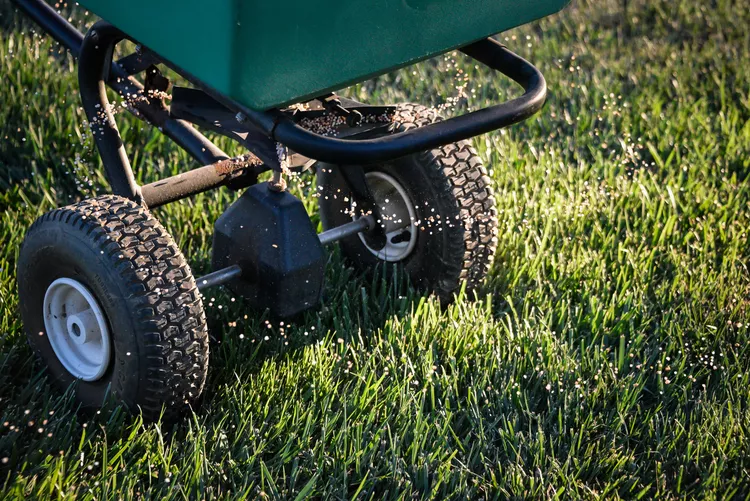Making sure your lawn has all the nutrients it needs will go a long way toward keeping it healthy and green. You may have heard that it's a good idea to apply a winter fertilizer to your lawn to help it weather the colder months and come back strong in spring. While that may be true in some cases, it depends on the type of grass you have and where you live. That's because you want to add nutrients when grass roots are growing. For cool-season bluegrass, fescue, or rye grass, their most active root growth happens in early fall, and for warm-season grasses such as Bermuda grass, zoysia, and St. Augustine, they do better with a fertilizer boost in spring. Once you know your grass type, you'll be able to figure out exactly when your lawn needs fertilizer.
When to Fertilize Cool-Season Grasses
Use this quick rule of thumb for the best time to add winter fertilizer to your lawn: Apply in September, unless you live in the southern third of the U.S. That's because the northern two-thirds of the U.S. is home to lawns with cool-season grasses or "transition" lawns with both cool-season and warm-season grasses. Throwing a lot of fertilizer on your cool-season lawn in July is a waste of money because in high summer, those grass roots are just biding their time, waiting for the temperatures to go back down so they can spread out some more. In addition to fertilizing in September, you can add a light helping of fertilizer in spring and that should be all your cool-season lawn needs for the year.
Best Fertilizer for Cool-Season Turfgrass
Nitrogen is probably all your lawn needs. N-P-K are the letters you'll see on fertilizer labels and they stand for the key nutrients: Nitrogen (N), phosphorus (P), and potassium (K). Odds are your soil has plenty of phosphorus and potassium. In fact, in some states it isn't even legal to buy lawn fertilizer with all those ingredients unless you have a soil test to prove you need them.
Excess phosphorous can cause major problems in waterways by encouraging algae, which throws off the balance of the ecosystem that keeps the water clear and fish and other aquatic life healthy. Dose your lawn with a slow-release nitrogen fertilizer; the fertilizer bag display of N-P-K ($24, The Home Depot)should have a bigger number in the first place and either zeros or smaller numbers for the other two nutrients, like 32-0-10.
How to Apply Fertilizer to Cool-Season Lawns
Don't fertilize a dry lawn. Instead, wait until the day after a rain, when the soil is moist. It's also best to time your fertilizer application so there's at least a few days before the next rain so your fertilizer doesn't get washed away before it gets absorbed into the soil. Calculate how much fertilizer you'll need for your lawn. Use a spreader or broadcaster, walking your lawn in a regular pattern to scatter the fertilizer as evenly as possible.
State Laws About Fertilizing Lawns
Maryland protects the Chesapeake Bay from pollution by setting a cutoff date for fertilizing lawns: There is no lawn fertilizing allowed between November 16 and March 1. Many states limit phosphorus in lawn fertilizers, to cut down on the phosphorus algae bloom that pollutes streams, rivers and lakes.




















